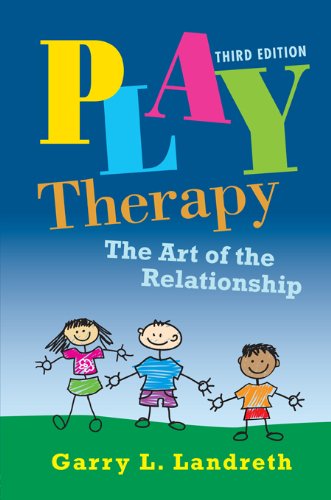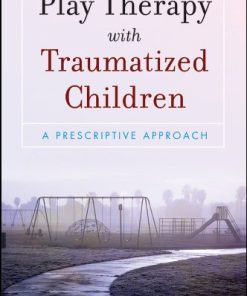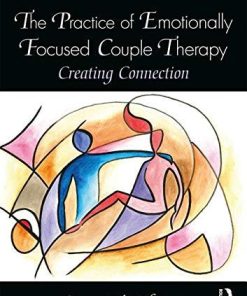Play Therapy: The Art of the Relationship 3rd Edition, (Ebook PDF)
$50.00 Original price was: $50.00.$25.00Current price is: $25.00.
Play Therapy: The Art of the Relationship 3rd Edition, (Ebook PDF) – Digital Instant Dowload.
Play Therapy: The Art of the Relationship 3rd Edition, (Ebook PDF) – Digital Instant Dowload.

Product details:
- ISBN-10 : 9780415886819
- ISBN-13 : 978-0415886819
- Author: Garry L. Landreth (Author)
Play Therapy: The Art of the Relationship is the newest incarnation of Garry Landreth’s comprehensive text on creating therapeutic relationships with children through play. It details the Child-Centered Play Therapy model, which stresses the importance of understanding the child’s world and perspective. This approach facilitates the play therapy process while allowing therapist and client to fully connect. Professors who have taught a course based on the previous edition will be pleased to find the core message intact, but updated with a significant body of recent research.
Table contents:
| Acknowledgments | xiii | |
| Preface | xv | |
| 1 | About Me, Garry Landreth | 1 |
| Principles for Relationships with Children | 5 | |
| Reference | 7 | |
| 2 | The Meaning of Play | 9 |
| Functions of Play | 9 | |
| Symbolic Play | 11 | |
| Children Communicate Through Play | 14 | |
| Play in the Therapeutic Process | 16 | |
| Stages in the Play Therapy Process | 20 | |
| Play of Adjusted and Maladjusted Children | 23 | |
| References | 25 | |
| 3 | History and Development of Play Therapy | 27 |
| Psychoanalytic Play Therapy | 29 | |
| Release Play Therapy | 32 | |
| Relationship Play Therapy | 34 | |
| Nondirective Play Therapy | 35 | |
| Play Therapy in Elementary Schools | 35 | |
| Association for Play Therapy | 37 | |
| University Training | 38 | |
| Center for Play Therapy | 38 | |
| Filial Therapy | 39 | |
| Trends in Play Therapy | 40 | |
| Play Therapy Results | 43 | |
| References | 45 | |
| 4 | A View of Children | 53 |
| Tenets for Relating to Children | 53 | |
| Children Are Resilient | 55 | |
| Some Children Are Like Popcorn, and Some Are Like Molasses | 57 | |
| References | 58 | |
| 5 | Child-Centered Play Therapy | 59 |
| Personality Theory | 60 | |
| A Child-Centered View of Personality and Behavior | 64 | |
| Key Concepts | 65 | |
| Adjustment and Maladjustment | 67 | |
| Therapeutic Conditions for Growth | 70 | |
| The Therapeutic Relationship | 79 | |
| Objectives | 87 | |
| What Children Learn in Play Therapy | 89 | |
| References | 93 | |
| 6 | The Play Therapist | 95 |
| Creating Differences | 96 | |
| Being There | 97 | |
| Personality Characteristics | 98 | |
| Therapist Self-Understanding | 102 | |
| Therapist Self-Acceptance | 105 | |
| Role of the Play Therapist | 108 | |
| Ryan–A Dying Child in Play Therapy | 110 | |
| Supervised Practice Facilitates Self-Insight | 116 | |
| The Inner Struggle of a Beginning Play Therapist | 118 | |
| Recommended Training Program | 120 | |
| References | 123 | |
| 7 | The Playroom and Materials | 125 |
| Playroom Location | 126 | |
| Playroom Size | 126 | |
| Playroom Characteristics | 127 | |
| Other Settings for Play Therapy | 130 | |
| Rationale for Selecting Toys and Materials | 132 | |
| Categories of Toys | 138 | |
| Totebag Playroom | 143 | |
| Recommended Toys and Materials for the Playroom | 144 | |
| Special Considerations | 146 | |
| Suggested Titles for the Play Therapy Program in Schools | 148 | |
| Implementing a Play Therapy Program in Schools | 148 | |
| Reference | 149 | |
| 8 | The Parent’s Part in the Process | 151 |
| Background Information | 152 | |
| Must Parents Also Be in Therapy? | 154 | |
| The Parent Interview | 157 | |
| Obtain Permission from Legal Guardian | 165 | |
| Psychiatric Referral | 166 | |
| Explaining Play Therapy to Parents | 166 | |
| Preparing Parents for Separation | 169 | |
| References | 171 | |
| 9 | Beginning the Relationship: The Child’s Hour | 173 |
| Objectives of the Relationship | 174 | |
| Making Contact with the Child | 176 | |
| The Initial Encounter in the Waiting Room | 179 | |
| Structuring the Relationship in the Playroom | 182 | |
| Responding to the Reluctant, Anxious Child | 187 | |
| The Child’s View of the Play Therapy Relationship | 189 | |
| Questioning Techniques of Children | 193 | |
| Explaining the Observation Mirror and Recording | 200 | |
| Taking Notes During the Session | 202 | |
| Play Therapists’ Reactions to Their First Sessions | 203 | |
| Basic Dimensions of the Relationship | 204 | |
| References | 206 | |
| 10 | Characteristics of Facilitative Responses | 207 |
| Sensitive Understanding: Being With | 208 | |
| Caring Acceptance | 209 | |
| Details of Therapeutic Responsiveness | 211 | |
| Facilitative Responses | 215 | |
| Returning Responsibility to Children | 221 | |
| Typical Nonfacilitative Responses | 224 | |
| Paul–A Fearful, Acting-Out Child in Play Therapy | 232 | |
| 11 | Therapeutic Limit Setting | 245 |
| Basic Guidelines in Limit Setting | 245 | |
| When to Present Limits | 248 | |
| Rationale for Therapeutic Limits | 249 | |
| Procedures in Therapeutic Limit Setting | 258 | |
| Steps in the Therapeutic Limit-Setting Process | 259 | |
| When Limits Are Broken | 262 | |
| Tentativeness in Limit Setting | 265 | |
| Situational Limits | 266 | |
| Beginning Play Therapists’ Reactions to Setting Limits | 272 | |
| References | 272 | |
| 12 | Typical Problems in Play Therapy and What to Do If… | 273 |
| What to Do If the Child Is Silent | 274 | |
| What to Do If the Child Wants to Bring Toys or Food into the Playroom | 276 | |
| What to Do If the Child Is Overly Dependent | 277 | |
| What to Do If the Child Persists in Seeking Praise | 279 | |
| What to Do If the Child Says You Talk Weird | 282 | |
| What to Do If the Child Wants the Therapist to Play a Guessing Game | 283 | |
| What to Do If the Child Asks for Expressions of Affection | 284 | |
| What to Do If the Child Wants to Hug or Sit in the Therapist’s Lap | 286 | |
| What to Do If the Child Tries to Steal a Toy | 287 | |
| What to Do If the Child Refuses to Leave the Playroom | 289 | |
| What to Do If the Therapist Unexpectedly Cannot Keep an Appointment | 291 | |
| 13 | Issues in Play Therapy | 293 |
| Confidentiality | 293 | |
| Participation in the Child’s Play | 295 | |
| Accepting Gifts from Children in Play Therapy | 299 | |
| Giving the Child a Reward at the End of Sessions or a Memento at Termination | 302 | |
| Asking the Child to Clean Up | 303 | |
| Informing Children of the Reason They Are in Play Therapy | 306 | |
| Bringing a Friend to the Playroom | 307 | |
| Inviting Parents or Siblings to the Playroom | 310 | |
| References | 310 | |
| 14 | Intensive and Short-Term Play Therapy | 311 |
| Intensive Play Therapy | 312 | |
| Short-Term Play Therapy | 316 | |
| Summary | 319 | |
| References | 319 | |
| 15 | Children in Play Therapy | 321 |
| Nancy–From Baldness to Curls | 322 | |
| Cindy–A Manipulative Child | 330 | |
| Amy–A Selective Mute Child | 340 | |
| Significance of Sibling Goup Play Therapy | 348 | |
| Summary | 349 | |
| References | 350 | |
| 16 | Determining Therapeutic Process and Termination | 351 |
| Determining Therapeutic Movement Within Sessions | 352 | |
| Dimensions of Change | 353 | |
| The Meaning of Termination | 356 | |
| Reference Points for Determining Termination | 357 | |
| Procedures for Ending the Relationship | 360 | |
| Children’s Reactions to the Last Session | 362 | |
| References | 364 | |
| 17 | Filial Therapy: Child-Parent-Relationship Training (CPR for Parents) | 365 |
| Parental Efficacy | 366 | |
| Historical Development of Filial Therapy | 368 | |
| The Process of Filial Therapy | 370 | |
| Selecting Parents | 373 | |
| Group Format for Training | 376 | |
| Structure and Content of the Training Sessions | 378 | |
| Research and Evaluation | 388 | |
| References | 396 | |
| Index | 399 | |
| About the Author | 407 |
You may also like…
Erotica - Fiction
Uncategorized











